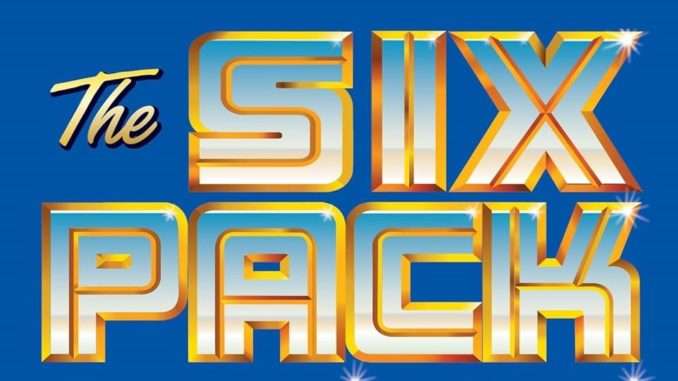
After a failed attempt to help write the memoir of The Iron Sheik just under two decades ago, author Brad Balukjian still had the itch to pen something about his boyhood hero. With the elusive biography out of reach, Balukjian looked to wrestling’s past for a truly transformative card to examine.
The date in question: December 26, 1983.
On that night, WWF booked a show at Madison Square Garden that featured the crowning of a new World Champion in the Iron Sheik. While a crowning achievement for Sheik, this essentially paved the way for Vince McMahon to anoint his new toy, Hulk Hogan, just a few weeks later (just nine short days after I was born).
Balukjian had the idea to track down several of the performers on the card that night and see where their lives took them. Of the twenty-three grapplers, Balukjian focused on Tony Atlas, Tito Santana, Sgt. Slaughter, Bill Eadie, and Jose Luis Rivera (Marcelino Rivera). He also profiled Hulk Hogan, Vince McMahon, and his hero, The Iron Sheik.
I appreciated Balukjian’s approach here; treating the book like a travelogue, documenting the miles traveled in his car as he moved from city to city for interviews with his subjects. It allowed him to get a better feel for the lives that the performers experienced. Especially in the case of Sgt Slaughter, one who did not have any interest in sitting down with Balukjian. One has to think it may have had something to do with the sea of accusations surrounding Slaughter’s (Bob Remus) false claims about serving in the U.S. Marine Corps. In that case, Balukjian was able to meet with friends, neighbors, and colleagues of Slaughter, and the other wrestlers, thus opening up a richer portrait of their lives.
Most of the men profiled here managed to come out on the other side of wrestling’s tumultuous 1980s by living comfortable lives, but it certainly wasn’t an easy journey to get there given that the statistics were not in their favor, men like Tony Atlas, who hit rock bottom after his initial release from WWF, or Iron Sheik, whose daughter was tragically murdered. They had to push through when so many others couldn’t find the strength to do so.
Balukjian examines the problems of the system in which they worked – no union, no healthcare, no job guarantee, or considerable time off to be with their families. The chapter examining Vince McMahon helps to put this into perspective.
Hopefully, those who came to this book after reading Balukjian’s first release, The Wax Pack, will take something away from how their childhood heroes were treated. In his discussions with Bill Eadie, Balukjian touches on the lawsuit where Eadie and over fifty other wrestlers came together to sue the WWE with claims that the company ignored the dangers of concussions. Balukjian also spent time with Konstantine Kyros, the lawyer who put together the lawsuit, which helped to fill in much of the background surrounding the legal battle.
Balukjian came to this project with a real sense of passion, and it shines through in his work. Having been unable to get his Iron Sheik biography off the ground ages ago, it was admirable to see him try to get Sheik’s story told again by approaching it from a different angle, and in doing so, he was able to showcase many of Sheik’s peers at the same time. His reunion with Sheik near the book’s completion helps to bring the journey full circle on a touching note.
THE SIX PACK is a great examination of an industry that provides both the highest of highs and lowest of lows for its performers and what’s unfortunate, is that it often seems completely arbitrary.
The Six Pack: On the Open Road in Search of WrestleMania by Brad Balukjian will be released on April 2 through Hachette Books
